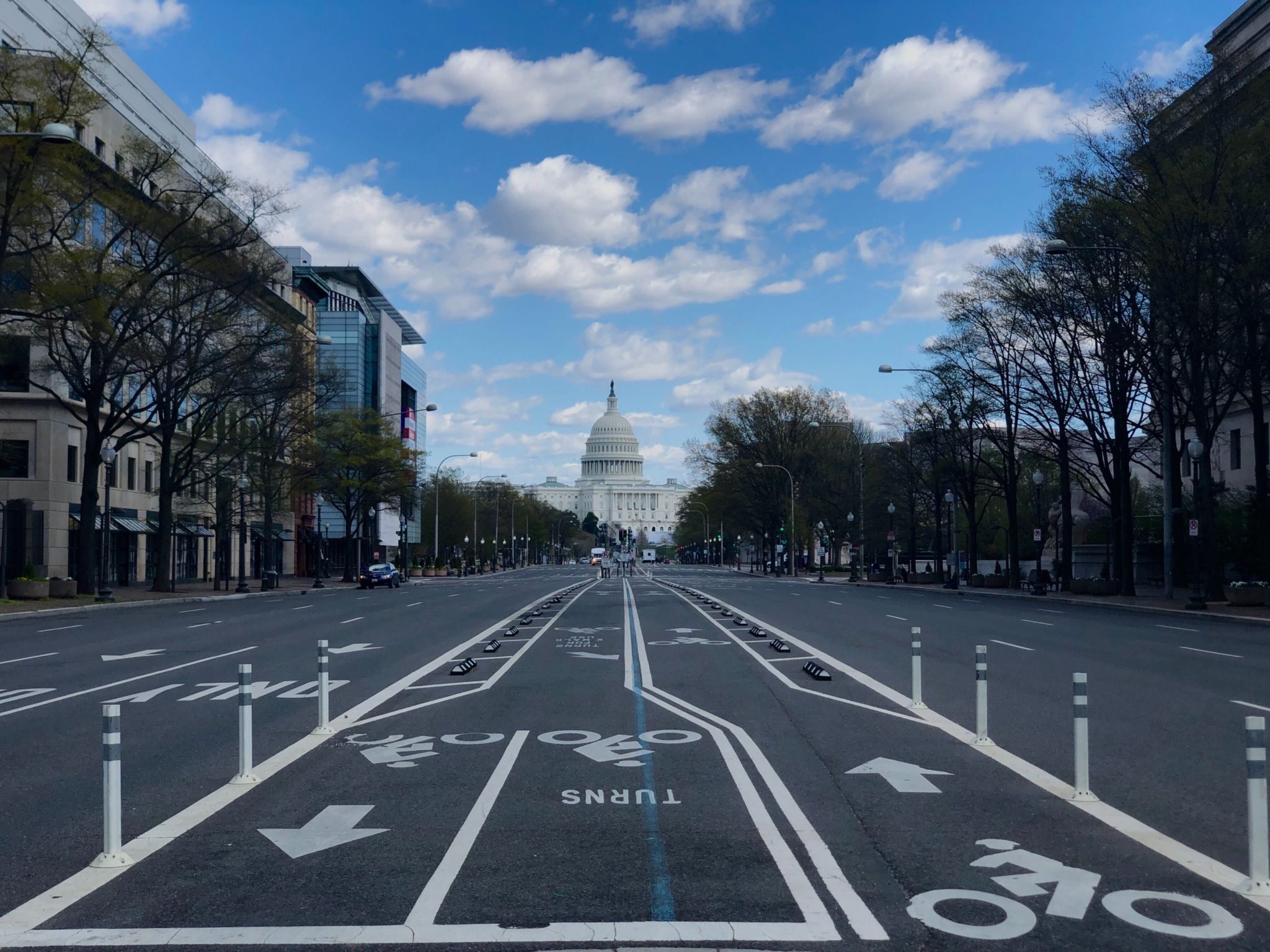About Coronavirus 2020
Washingtonian is keeping you up to date on the coronavirus around DC.
Amid the tremendous damage that the novel coronavirus has caused—to human life, to the economy, to relationships—there’s one thing that has inadvertently benefited from the global shutdown: air quality.
The Metropolitan Council of Governments, in conjunction with the three local jurisdictions, has for years given a daily Air Quality Index forecast—telling us if it’s going to be, say, a “code orange” day (“unhealthy for sensitive groups”) or “code green” (“air pollution poses little or no risk”).
Between March 13, when many local businesses started to shut down, and today, every day except two have been code green. The other two were “code yellow,” or moderate air quality, one level higher. Compare that to 2019, when 14 of the 35 days during that same span were code yellow.
“This accidental experiment we’re in has been really interesting,” says Jennifer Desimone, head of COG’s air program. “Vehicle traffic on major highways in the region is about 50 percent lower. We’ve also seen, in terms of emissions from electricity, and this is not a number specific to our region but to a much larger Northeast region, in terms of electricity demand, it’s about a 15-percent decrease. We feel that’s due to offices and businesses closing.”
NASA recently released satellite data showing that the level of nitrogen dioxide in the atmosphere, produced when fossil fuels are burned by vehicles and power plants, has dropped about 30 percent in the Northeast corridor—to the lowest level it’s been since 2005, when NASA began keeping track. (Move the slider bar from left to right on the NASA map to see the drastic difference.)
“There is a caveat,” Desimone says. “It’s really hard to determine how much is being affected by lower emissions and how much is affected by weather. Weather does play a role in emissions throughout the region. This week is a great example of how weather can affect air quality. It’s been rainy, it’s been windy, it’s been cool. That keeps air-pollution levels lower. In our region, we see the highest levels of air pollution in summer months. We could say, yes, the emissions are playing a role to reduce air pollution, but the absolute extent of that is what we don’t know. The data analysis will continue to go on a long time after this.”
What also remains to be seen: What will happen when businesses start to reopen, and more cars are back on the roads?
“There have been huge economic consequences to all this,” Desimone says. “But what will be interesting as we look at the data going forward is to say, okay, what can businesses, individuals, and governments do to reduce air pollution in the future and make it easier for us to breathe? Will businesses embrace teleworking on a more permanent basis? Things like that will help get cars off the road and help reduce emissions. It’s going to be very interesting to see in terms of policy what we’ll be able to implement, what will stick.”
This article has been corrected since its original posting.





















